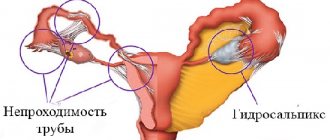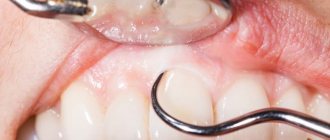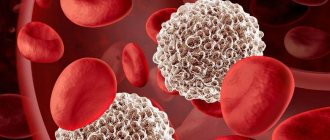Stuttering
Stroke
Encephalitis
4831 March 30
IMPORTANT!
The information in this section cannot be used for self-diagnosis and self-treatment.
In case of pain or other exacerbation of the disease, diagnostic tests should be prescribed only by the attending physician. To make a diagnosis and properly prescribe treatment, you should contact your doctor. Stuttering: causes of occurrence, what diseases it occurs with, diagnosis and treatment methods.
Definition
Oral speech is a complex multicomponent process in which not only the structures of the maxillofacial apparatus, but also the brain centers located in the cerebral cortex take part. It is in these structures that in most cases certain pathological processes leading to the development of stuttering are localized.
Stuttering (stammering) is understood as a speech feature characterized by frequent repetition or prolongation of sounds, syllables or even words in combination with frequent pauses, which disrupts the fluency of oral speech.
Today, different figures are given that characterize the number of people who stutter - from 1 to 5%. However, all experts are unanimous that among males stuttering occurs 4 times more often than among females, and also that in 90-95% of cases stuttering occurs between the ages of 2 and 7 years.
This speech defect often leads to problems in communication, which consist not only in the difficulty of perceiving such speech on the part of the listener, but are also associated with the internal emotional experiences of a stuttering person.
Types of stuttering
There are the following types of stuttering:
- Neurotic stuttering, the development of which is usually based on some psychotraumatic factor. This type of stuttering is psychogenic and is not based on structural damage to the brain or peripheral parts of the speech apparatus.
- Neurosis-like stuttering - unlike neurotic stuttering, it develops against the background of organic damage to the nervous system.
- Mixed stuttering develops against the background of both a psychogenic factor and true damage to the nervous system.
Possible causes of stuttering
Stuttering is based on various muscle spasms of the speech apparatus. They develop due to abnormal impulses emanating from the motor speech centers of the brain. The cause of the pathological functioning of these parts of the central nervous system can be both structural and functional disorders. The latter are characterized by the presence in some part of the brain of a focus of excitation, which activates the motor speech center and leads to the development of convulsive readiness of the muscles involved in articulation and voice formation.
If tonic convulsions develop, a prolonged muscle spasm occurs, resulting in speech delay. Unlike tonic convulsions, clonic convulsions are a series of short-term convulsions that lead to involuntary repetition of sounds or syllables.
Both types of seizures lead to impaired speech fluency and stuttering.
Diseases that cause stuttering
Among the factors influencing the development of stuttering, doctors identify the following diseases and conditions:
- emotional lability and dysfunction of the autonomic nervous system;
- mental trauma;
- traumatic brain injuries;
- infectious brain damage;
- stroke;
- perinatal damage to the central nervous system of the child, associated, as a rule, with a violation of the supply of oxygen to brain structures in the prenatal period of development, during childbirth and in the first hours and days of life.
Which doctors should I contact if I stutter?
Traditionally, the initial examination of a patient with stuttering is carried out. After a detailed interview with the patient, the purpose of which is to clarify the circumstances of the appearance of stuttering and possible provoking factors, the doctor specifically examines the nervous system for the presence of other signs of neurological abnormalities. In the treatment of stuttering, doctors resort to the help of a speech therapist and psychologist. Often, to treat stuttering, especially in the absence of organic damage to the nervous system, the neurologist refers the patient to a consultation with a psychiatrist in order to identify some mental abnormalities that lead to the development of stuttering.
Diagnosis and examinations for stuttering
Diagnosis of stuttering begins with a neurological examination, during which a neurologist may suspect the presence of a structural brain lesion or, conversely, receive no evidence of the presence of organic damage. In this case, the doctor resorts to additional laboratory and instrumental diagnostic methods in order to confirm or exclude various organic lesions. EEG and neuroimaging methods are coming to the fore.
Electroencephalography (EEG) is one of the integral methods of additional research of a patient suffering from stuttering. EEG helps differentiate neurotic and neurosis-like stuttering by identifying signs of convulsive activity in individual areas of the brain.
How and why does stuttering occur?
The mechanism of stuttering is still not fully understood. In the literature it is described as follows.
- For a number of reasons, Broca's speech center becomes excited and begins to work faster than usual. As a result, the speech circle opens. This means that the connection between the centers where speech is formed is disrupted.
- Overexcitation is transmitted to other areas of the cerebral cortex responsible for motor activity.
- As a result, the muscles of the speech organs (tongue, lips) cramp. Sometimes the spasm affects not only the pronunciation muscles, but also the respiratory muscles.
- Then the work of Broca's center returns to normal, and the speech circle closes again.
In most cases, difficulties arise with the pronunciation of consonant sounds, as they require more effort. The hardest part for a person is the beginning or middle of a phrase. Sometimes a cramp reduces not only the speech muscles, but also the muscles of the arms, legs, and face. Men are most susceptible to the appearance of logoneurosis, since their left hemisphere, where Broca's center is located, is usually less developed than in women. Also, stuttering usually manifests itself in people whose blood relatives suffer from the same disorder. If speech centers are weak from birth, then any unfavorable factors can easily disrupt their work.
Experts identify the following reasons for the development of logoneurosis:
- Severe stress - loss of loved ones, emergency, natural disasters, accidents, military operations, constant scandals at home. Due to emotional overload, disturbances occur in the coordinated functioning of the muscles that are responsible for sound pronunciation.
- Diseases of the central nervous system - this can include skull injuries, severe infections affecting the brain, previous strokes, any neoplasms that put pressure on the speech centers. All this interferes with the normal transmission of impulses from the brain along nerve fibers to the muscles.
In the latter case, logoneurosis has nothing to do with emotions. In other words, a person stutters even if he is in a calm environment.
These reasons in themselves do not lead to stuttering. In essence, they are triggers. Whether a person starts to stutter or not depends largely on the state of the central nervous system. If she is strong and relatively healthy, then this will not happen. If the central nervous system is weakened, then stuttering is likely to develop.
3. Symptoms and diagnosis
As stated above, there are different variations of stuttering that are quite different from each other. In some cases, logoclonia predominates (involuntary repetition of sounds or syllables “at the start” of a phrase or word), in others the tonic component is pronounced - the need to pronounce a word causes overstrain of the facial muscles, tongue, and neck muscles.
Sometimes certain sounds are involuntarily stretched out (as if sung), or the patient cannot pronounce certain phonemes, while other combinations of sounds are verbalized without difficulty. Often, stuttering appears only in certain situations, and in a more comfortable environment for the patient it disappears without a trace.
There are four phases in the progression of logoneurosis: from preschool to “adult”, at the onset of which a stuttering person, as a rule, develops his own techniques for “smoothing out” or “masking” stuttering, gets used to almost automatically replacing words or sounds that are inaccessible to him with more convenient synonyms; in general, comes to terms with the presence of the disorder, more or less adapts and learns to live with it, as well as with a deeply rooted inferiority complex, fear and avoidance of communication, anxiety-depressive syndrome and other mental disorders, sometimes much more severe and pronounced than the primary stuttering.
However, under favorable conditions, correct parental behavior tactics, and a friendly attitude from the microsocial environment, in many cases there is a tendency toward a gradual reduction of stuttering. Complete elimination of speech disorder is observed in 50-80% of cases.
Diagnostics may require the involvement of specialized specialists - first of all, to identify or exclude a pathological organic background (residual consequences of birth trauma, latent neuroinfections, tumors, etc.), as well as to assess the general psychological state, constitutional personality type and other factors, important in terms of future treatment.
About our clinic Chistye Prudy metro station Medintercom page!
2. Reasons
The role of socio-psychological factors in the development of stuttering is well known and obvious. Such factors include situations of acute and chronic distress, psychotrauma, experienced states of shock (after which speech may be completely lost for some time, recovering with stuttering), socio-pedagogical neglect, unhealthy microclimate in the family, inflated levels of expectations and requirements for child, lack of attention and communication, unconscious and unreacted internal conflict, etc. Actually, this is why stuttering is classified as a neurotic disorder, because it is almost always based on one or another psychogenia.
However, the pathogenesis of the development of logoneurosis at the level of CNS functioning remains essentially unclear. Over the last century, a number of serious hypotheses and theories have been put forward, from psychoanalytic and behavioral to psycholinguistic and neurophysiological, but all of them, at best, are only more or less successful models that can answer some questions and do not solve the problem as a whole. Thus, until recently, the role of genetic factors was apparently underestimated (hereditary predisposition could explain, among other things, the predominance of males among those who stutter) and/or the significance of hormonal imbalance (in particular, abnormal concentrations of the neurotransmitter dopamine). To this day, it is unknown why logoneurosis occurs in such different variants and what exactly determines the clinical specificity under seemingly identical initial conditions.
It is not always possible to find a reason in the anamnesis (including in the sphere of the unconscious and repressed) that could be considered quite serious: many children and adults who have experienced more than severe psychological trauma do not show any signs of stuttering.
Electrophysiological, tomographic and other instrumental diagnostic methods also do not yet provide comprehensive information about the connections between stuttering and organic changes in the structures of the brain, in particular, Broca’s area, the functioning of which is directly associated with speech.
The situation is further complicated by the fact that stuttering often develops like a vicious vicious circle: a child with a speech disorder experiences enormous discomfort about his “inferiority” (especially if he is subjected to ridicule or other pressure), may withdraw, fall into a severe depressive state, begin to be afraid and avoid verbal communication in general, abandon all attempts and faith in the possibility of a cure; the growing intrapsychic tension, thus, according to the feedback principle, progressively aggravates logoneurosis.
Research in this area is being carried out in leading psychoneurological centers around the world, but today correction techniques (developed, for the most part, empirically) are more successful than attempts to create a consistent and fairly complete theoretical basis, which in turn would open the way to development of truly etiopathogenetic therapy.
Visit our Neurology page
Which specialist should I contact?
As mentioned above, stuttering is caused by a number of reasons, and therefore the approach to treatment must be comprehensive.
- A neurologist evaluates the state of the central nervous system and treats diagnosed disorders.
- A psychologist helps to cope with emotional turmoil, overcome fear of communication, and correct character weaknesses.
- The speech therapist teaches you how to breathe correctly, control your voice, and conduct a smooth and rhythmic conversation.
Acupuncture procedures that have a positive effect on brain function, sessions with a psychotherapist and a physical therapy instructor will also be useful.
However, the most important thing in the treatment of stuttering is motivation, since the duration of the course is several weeks. The exercises are based on repeated repetition of the same actions, constantly overcoming the fear of communication. Efficiency directly depends on the efforts and desires of the patient himself.
Publication date: 04/13/2021. Last modified: 05/06/2021.
4.Treatment
Currently, there are many effective methods for treating stuttering. The primary task is to normalize the attitude towards the disorder and develop a constructive, cooperative position in the patient himself, as well as in his immediate family. It is equally important to examine and, if necessary, adjust the system of intrafamily relations. Various psychotherapeutic techniques of relaxation, distraction, coping (overcoming) fears and mental blocks, teaching autosuggestive techniques, and desensitization are used. Systems of special speech therapy gymnastics, massage, and breathing have been developed. Sometimes drug support is used (tranquilizers, antispasmodics, antidepressants), in other cases it is not indicated and is inappropriate.
If an organic pathology of the central nervous system is detected, a course of adequate neurological treatment or neurosurgical intervention is prescribed (as indicated).
Today, in most cases, it is possible to achieve a complete cure or at least a radical reduction of logoneurotic symptoms. It is very important to seek help at the initial stage, at the first signs of disturbances in rhythm and fluency of speech, when the disorder has not yet acquired the character of stagnant fixation with a lot of secondary psychological consequences.
Fighting stuttering at home
Most classes can be done at home. Some exercises, especially their first lessons, are carried out together with a specialist. Subsequent ones, when their mechanism is clear, you can do them on your own. The only exceptions are those that require special equipment, tools and other items. It is also an exception to have complex diagnoses that are caused by disorders in the nervous system or require the help of a psychotherapist.
Self-help techniques
Shows the positive effect of auto-training. Such exercises consist of practicing in front of a mirror to see your own facial expressions. They take about an hour and do not require much effort from the patient.
The main requirement is to maintain a calm, measured bottom pattern, have long, healthy sleep, give up bad habits, and not be stressed.
Prevention of logoneuroses
Prevention is measures that can prevent the appearance and development of speech in a child and an adult. Such measures can reduce the risk. There are three types of prevention of logoneurosis:
- prevention of speech disorders in children;
- relapse prevention;
- prevention of problems with the child’s social adaptation.
If the baby is too sensitive, weak, or has an unstable psyche, such measures are especially useful. When the first symptoms appear, the parent should immediately contact speech therapists and neurologists.
Statistics
Logoneurosis is considered a problem that arises more often in childhood than in adulthood. According to statistics, around one to three percent of children worldwide stutter. These statistics vary depending on location, age, and nationality.
Boys are four times more likely to develop a stutter than girls. Many people do not know what logoneurosis is and whether they have it, since the pathology can manifest itself in a milder form.
It has been proven that stuttering in adults, which they suffer from since childhood, is much more common in people who grew up in orphanages and boarding schools. It is obvious that early separation from parents and an unfavorable social climate affect the further psychological state and development of a person.
Also, people living in villages and towns are less susceptible to speech defects than those living in a metropolis. This is due to the calm environment. Adults who stutter account for only 1% of the population, which indicates the successful treatment of this pathology.
Siblings adopt this disorder in 18% of cases. Moreover, stuttering occurs in 32% of dizygotic twins, and in 77% of monozygotic twins.
Where to go for treatment of logoneurosis?
Throughout the entire existence of the Ember center, our specialists have successfully relieved their clients (adults and children) from logoneurosis. Correction of logoneurosis should be carried out by competent specialists. Contact our center and our specialists will save you or your loved ones from logoneurosis forever. If necessary, classes can be held at home, in an environment that is comfortable and familiar to the client.
Make an initial appointment for the correction of logoneurosis by phone or fill out the application form on the website.









